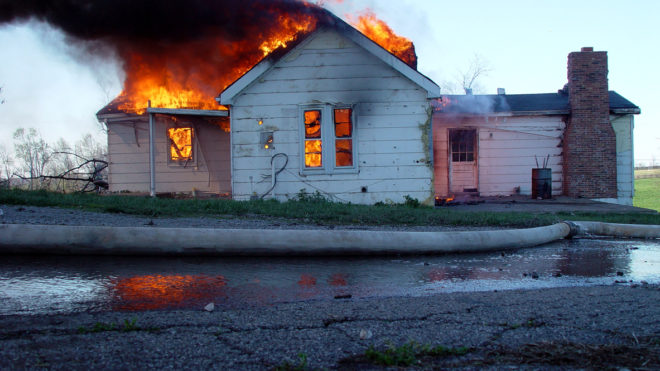6/14/20 • 10:20P • Memphis
In his essay, “Let It Die” activist-artist and cook, Tunde Wey poses a COVID-19 era question about the restaurant industry, which he has experience with: “Can you renovate a burning house?” The analogy plays nice on a larger scale, to America, as we stand here five months into a viral plague (yes, still!) and more recently, serious racial strife that together have torched far more than the restaurant industry.
Let’s focus on a topic even closer to home, the world of work. Mr. Wey has a scaled down question for this, too (an amuse bouche, if you will): “Can you renovate a room in a burning house?” The room I’d like us to spend a few minutes in today is the work room.
Not to put too fine a point on it, but with the US unemployment rate having effectively tripled inside three months and GDP going the other direction, we better hope we can make some progress before this thing completely flames out.
First the good news. I will submit that yes, we can renovate under fire, and indeed it has already begun. Though the path won’t be smooth, straight, or without casualties, I see five (5) places where we can expect to see changes (positive changes) by the time we reach the other end of this tunnel. Buckle up, it’s gonna be bumpy for awhile, but here’s the first one. The others will be treated in subsequent posts:
The Changes in How and Where We Do Work Mean That We Must Change.
If nothing else, COVID-19 has put a stake in the heart of the long-held notion that our jobs are places in a building that we report to every day and sit or stand with our feet screwed to the floor. A decade or so ago, British management scholar, Charles Handy opined that organizations should no longer “think of themselves as ‘employers’, but as “organizers of work.” Mr. Handy has proven remarkably prescient. Work, jobs, and workplaces have to a great degree been disaggregated, and “employers”, as promised, are rapidly becoming well, uh, organizers of work, platforms if you will.
Indeed, the COVID-related stay at home orders/suggestions that most of us were governed by for the better part of three months (and may see again) gave a steroid-like boost to then nascent Work From Home WFH initiatives. According to Gallup, as of April, 2020, 62% of US workers were doing significant amounts of their work from home, and 59% of us would prefer to keep it that way.
Feedback from the C-suite suggests that many of them are pleasantly surprised to see work actually getting done more productively than before. Add to that the fact that while they enjoy having a designated office (a nice one), most seem to agree that not having to go there every day is golden. In other words, this arrangement isn’t going to change anytime soon. Hell, even the bankers started staying home, while their banks welcomed people wearing masks who wanted to make a withdrawal. Go figure.
From both leadership and ownership standpoints, this is scary stuff. Front line leaders worry a lot about getting the wash out quickly and reliably. “How can I possibly do that if I can’t even see my worker bees?” Shareholders, ably represented by the bean-counters, worry about many of the same things, as many seem spring loaded to believe that most people are out to screw us, and absent the ability to lock the whole thing down via stifling “supervision”, they will do just that, and we’ll doubtless go broke.
The good news is that, given sufficient bandwidth, people who are focused, fired up, and capably led (not “supervised”, led) will outperform the herd by a wide margin. If in doubt, go here. They neither need, nor will tolerate micro-management. Will we inevitably get some misfits? Of course. But with a capable leader and a high-performance team, they will be discovered and dealt with much faster and with less damage than otherwise would occur.
While as noted, CEO’s across the landscape are pleasantly surprised thus far by the boost in energy and productivity accompanying this arrangement, they worry with good cause about management’s ability to adapt to this more complex paradigm, and do it without breaking the culture of the hive.
To the point of their concern, the “bad news” is that to support this new mode of operating, we’re the ones who may need to change, whether that change has to do with our outlook, our inclination to put others’ interests ahead of our own, our ability to communicate clearly thru different modes, media, and time zones, or our courage to tell the truth and make hard decisions. In short, the importance of “soft skills” has, by virtue of this condition, grown exponentially, and real leaders are standing out more for their ability to story-tell, influence, inspire, recruit, and coach talent, whether it’s on the regular payroll, a 1099, or daily cash payment. The question is, have your skills kept pace? How would you know?
Given that the runway each of us has to operate with is extremely short for the foreseeable future, our advice is that you do an honest assessment of your skills as a leader, and figure out now (before somebody does it for you), what strengths can be capitalized on, and what blind spots need to be fleshed out and leveled up. Then, get some help working on those things. I think you’ll find it time well spent.
Our next post in this theme has to do with Managerial Expectations, as in the power of your expectations for the future AND the expectations that your followers have of you.
book richard or bill to speak for your meeting


